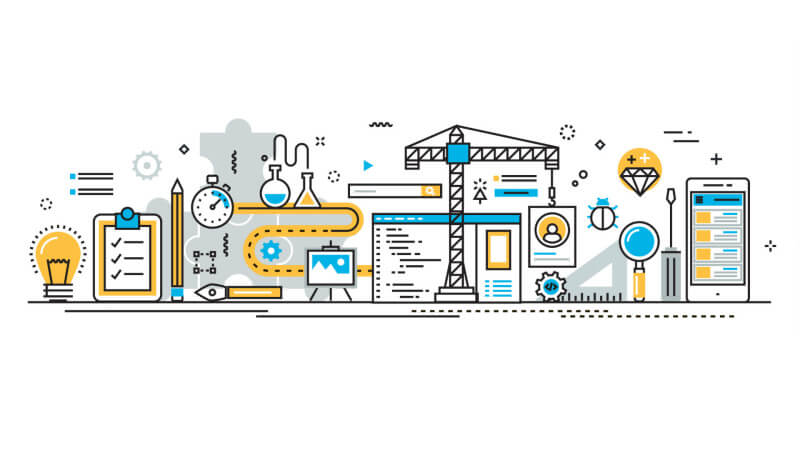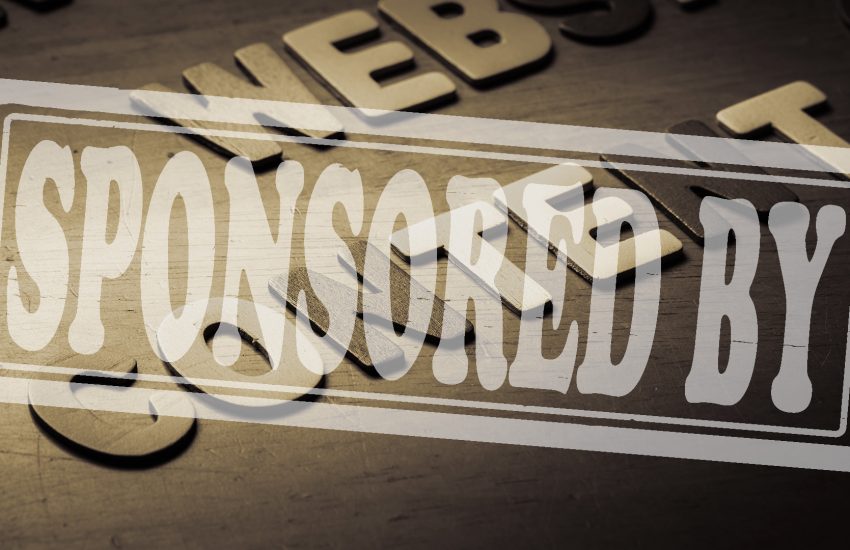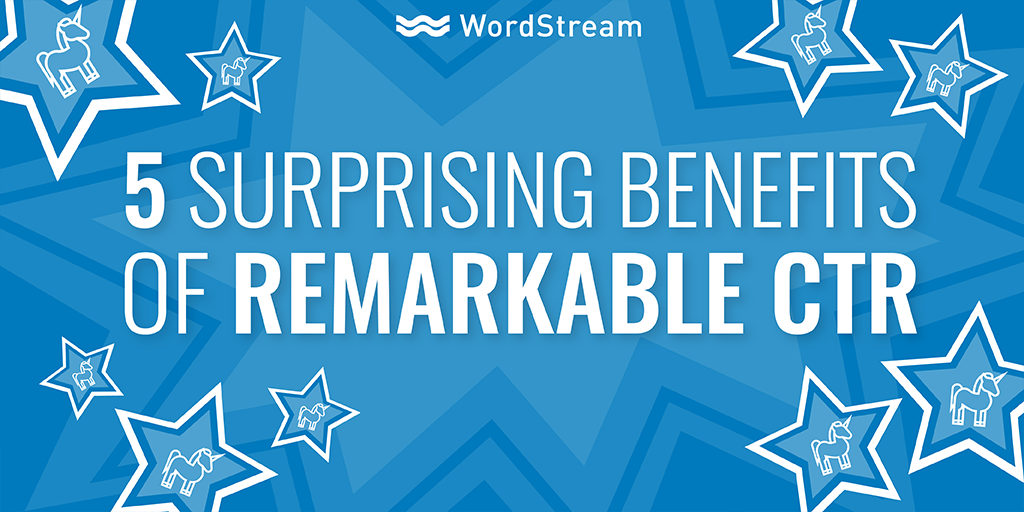
Tag: benefits


The SEO benefits of developing a solid site structure
Please visit Marketing Land for the full article.

Still not sold on native advertising? 3 benefits you should know about.
Please visit Marketing Land for the full article.

5 Surprising Benefits of a Super-High CTR
All of my regular readers know that I have a completely normal and healthy obsession with unicorns. I am the Original Unicornaholic.
You should be obsessed with unicorns, too! Too many marketers settle for boring donkeys when there are magical unicorns just waiting to be discovered. Unicorns that will save you money and make you money!
But unicorns aren’t my only obsession. I have another: increasing click-through rates.
Obviously, CTR is important in PPC marketing. A higher CTR means a higher Quality Score, which reduces your CPC and improves your ad rank.
But it goes much further than that.
A remarkable CTR is not only the most important thing in AdWords, but it is also extremely important for other marketing channels. These include organic search, CRO, social media, and email marketing.
Here are five surprising benefits of having a remarkable, unicorn-worthy CTR across all your marketing channels.

1. Much Higher Ad Impression Share
You get big discounts from having a high CTR. Namely, a lower cost per click, which really adds up as clicks accumulate.
This is true not just of vanilla search ads, but all Google properties, whether we’re talking about the Google Display Network or Gmail Ads.
But a remarkable CTR doesn’t just impact CPC. It also impacts your impression share – how often your ads show up in the first place.
On the Google Search Network, every increase (or decrease) of 1 point in Quality Score can make a huge positive impact on your impression share:

If you can increase your Quality Score by one point, your impression share on average will increase by about 6 percent on desktop.
This is even bigger deal on mobile, where impression share is twice as competitive.

Increasing your Quality Score by one point would increase your impression share by an average of 12 percent!
Data sources: Impression share data is based on an analysis of approximately 10,000 small and medium-size accounts (spending between $10,000 and $15,000 per month), based worldwide, advertising on the Search network in Q1 and Q2 of 2015.
2. Your Organic Search Positions Will Get A Boost

We recently conducted research to test whether achieving above-expected user engagement metrics results in better organic rankings. We observed an unmistakable pattern:

- The more your pages beat the expected organic CTR for a given position, the more likely you are to appear in prominent organic positions. So if you want to move up by one spot (e.g., Position 5 to Position 4) in Google’s SERP, you need to increase your CTR by 3 percent. If you want to move up again (e.g., Position 4 to Position 3), you’ll need to increase your CTR by another 3 percent.
- If your pages fall below the expected organic search CTR, then your pages will appear in lower organic SERP positions. Basically, if your page fails to beat the expected click-through rate for a given position, it’s unlikely your page will appear in positions 1–5.
You want your pages get as many organic search clicks as possible, right? Attracting more clicks means more traffic to your site, which also tells Google that your page is the best answer for users – it is relevant and awesome.
Another thing we discovered was that the weighting of click-through rate is in Google’s organic search ranking algorithms is becoming more important every month this year.

Here I was tracking a group of 1,000 keywords and URLs for the past 5 months. What I found was that the Google algorithm is shifting to increasingly higher CTRs for top-4 organic ranking status.
This is what you would expect to see if Google Search were employing a machine learning-based algorithm that reordered listings based on CTR – people would see more of what they were hoping to see at the top, reducing the need to scroll lower down into the SERPs.
3. Your Conversion Rates Increase
Increasing your click-through rate will also increase your conversion rates. If you can increase your CTR by 2x then your conversion rate should increase by 50 percent.
That’s why click-through rate is the most important conversion metric (in my opinion).
For example, look at this data from one large client’s account:

This is just one example. We see this same conversion curve in many accounts. (It’s just difficult to combine multiple accounts into one graph because conversion rates vary depending on factors like the industry and offer.)
What’s happening here is that if you can get someone excited to click on your website (via email, ads, organic search listings, or whatever), the excitement carries through to sign-up and purchase.

4. Free Clicks From Social Ads
Facebook and Twitter don’t have a Quality Score. Well, they do, Facebook just calls it Relevance Score and Twitter calls it Quality Adjusted Bid.
Whatever they call their version of Quality Score, having a higher score results in a higher ad impression share for the same budget at a lower cost per engagement. A high engagement rate means your ads will be more visible and more cost effective, as shown here:

Notice how the cost per engagement on Twitter Ads falls dramatically as the engagement rate of the post you’re promoting rises.
One of the surprising benefits of having high engagement on Facebook and Twitter is that you’ll benefit from free clicks. How?
On Facebook, if someone shares one of your boosted posts, that will show up in another person’s news feed and you won’t get charged for any of the additional engagements that happen there.
On Twitter, if you do a Promoted Tweet, when one of your followers retweets or shares it, you’ll get more totally free organic impressions.

5. People Will Actually See Your Emails
Now let’s talk about email marketing. How many emails do you get each day? Dozens? Hundreds?
If you engage with the emails that brands and businesses regularly send to you, you’ll continue to see them. If not, it might get filed away in Outlook’s Clutter folder or it may be relegated to Gmail’s Promotions tab – or even worse, the Spam folder.

Case in point:

Microsoft Outlook’s clutter filter regularly filter emails I’ve opted into receiving – including internal emails from my own company! These emails are being filtered out based on machine learning.
What does this mean for your company?
If your emails have a higher CTR (though for emails the better equivalent is actually higher open rate), then it’s more likely that your emails will actually get seen, opened, and clicked on. If your click-through rates are terrible, your emails will be rounded up and thrown in the dark “clutter dungeon.”
One thing we did was to delete people from our email lists who were unresponsive. If you’re just accumulating emails over many years, why? Do you think someone who has been dormant and never engaged with your emails is going to magically turn into a sale 5 years later?
Deleting half your database is one way to instantly more than double your CTR. Email providers will notice that more people are engaging, making it less likely your emails will end up in the dungeon.
Why I’m Obsessed with CTR

There’s a reason why click-through rate is one metric I pay the most attention to. Increasing your CTR will result in:
- More ad impressions
- Better organic search rankings
- Higher conversion rates
- Free clicks from social media ads
- More people seeing, opening. and engaging with your emails
If you want to enjoy all these great benefits, you need to start optimizing your CTR. Make yours remarkable!
